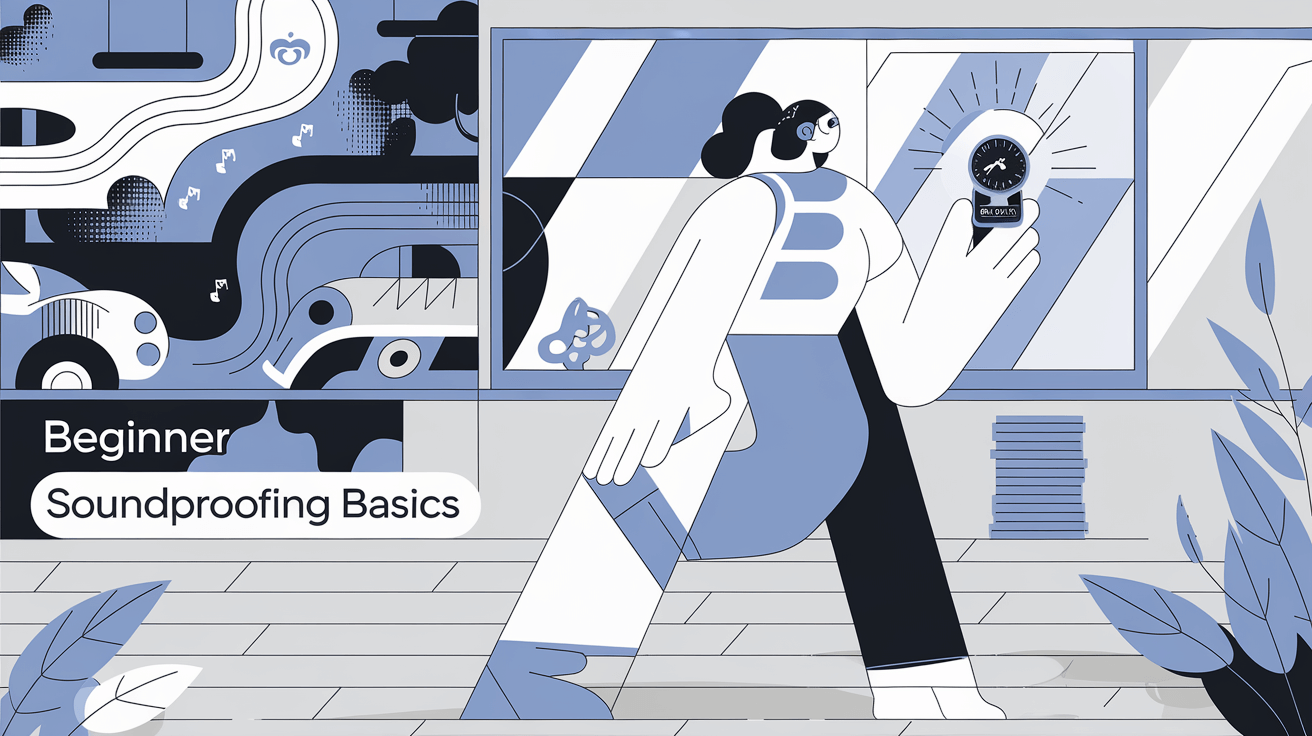Want to silence noise but don’t know where to start? Soundproofing basics give you the foundation to create a quieter, more peaceful space—whether it’s your home, office, or studio.
From barking dogs to traffic hum, noise can disrupt your life—stealing sleep, breaking focus, or just driving you up the wall. This guide covers the essentials to get started with soundproofing, breaking it down into simple, actionable steps for beginners.
If you’re ready for the full deep dive—covering every angle of noise control—explore to take your knowledge to the next level. For now, let’s build your starting point with the core concepts you need to know.
Noise isn’t just an annoyance—it’s a real problem, with studies linking chronic exposure to stress, heart issues, and even reduced productivity. Soundproofing isn’t a luxury; it’s a game-changer for reclaiming your space and sanity.
You don’t need to be an expert to make a difference—basic principles and a few smart moves can go a long way. By the end of this guide, you’ll know what soundproofing is, why it matters, and how to begin—without the guesswork.
Soundproofing 101: The Basics You Need to Know
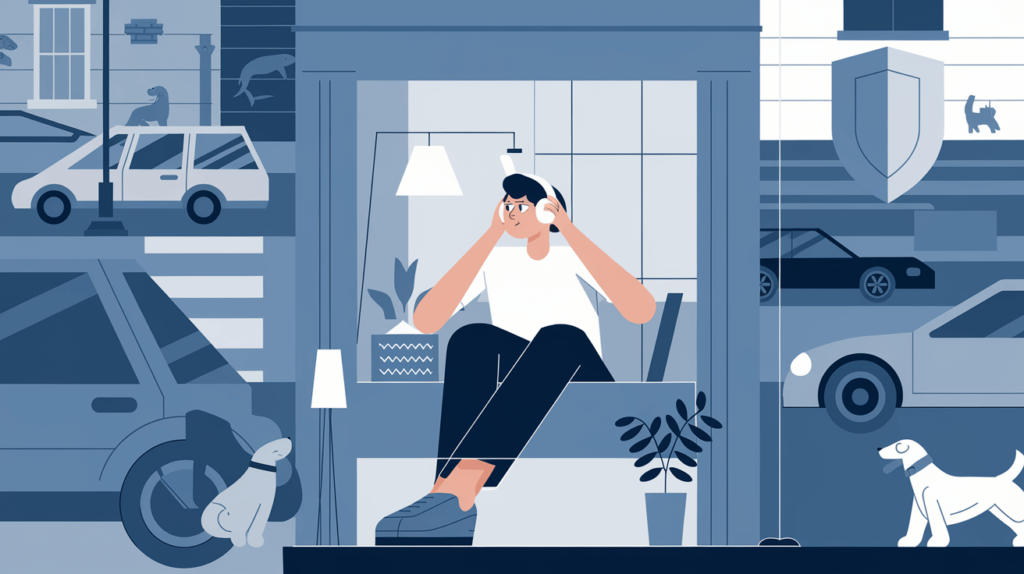
Soundproofing blocks or reduces noise traveling through walls, floors, or ceilings—it’s your key to peace in a noisy world. At its core, it’s about creating barriers that stop sound waves, whether it’s the hum of a busy street or a neighbor’s late-night TV.
Why does this matter for beginners? Noise impacts more than your mood—studies show chronic exposure can spike stress, disrupt sleep, and even contribute to health issues like high blood pressure over time.
For a deeper dive into what soundproofing really means, check out What Is Soundproofing—it’s your starting point for understanding the fundamentals. If you’re wondering why it’s worth the effort, Why Soundproofing? breaks down the benefits in detail.
Think of soundproofing as a shield—it’s not about perfection but about control. Even small changes, like sealing a door, can make a big difference in your daily life.
It’s not just for fancy studios or luxury homes—anyone can start soundproofing with the right basics. This guide will walk you through the key ideas to get you going, no pro skills needed.
Soundproofing vs. Sound Absorption: A Beginner’s Guide
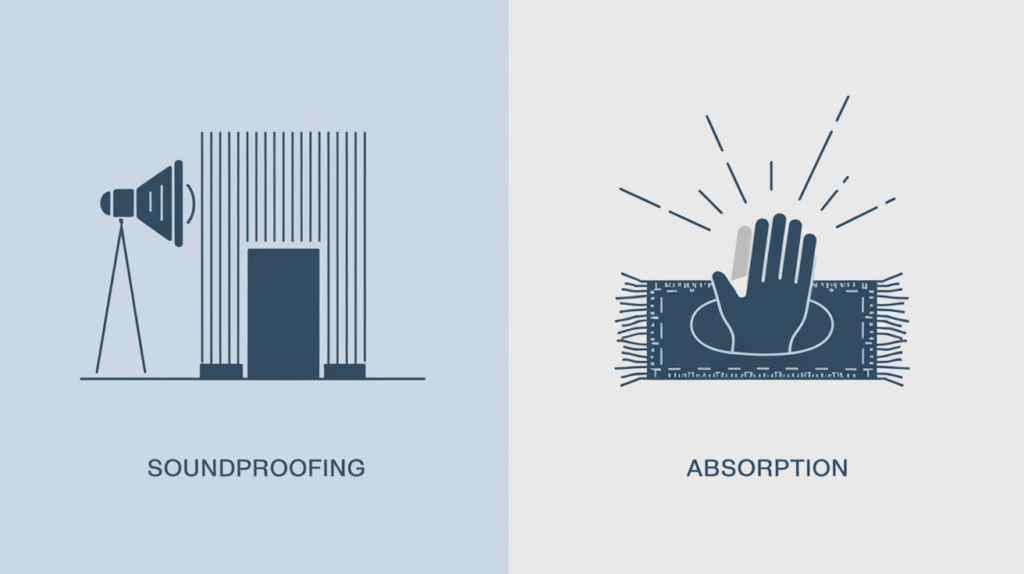
Soundproofing stops noise from crossing barriers—like walls or doors—while sound absorption softens echoes inside a room using materials like rugs or foam. Knowing the difference helps you tackle the right problem—outside noise needs blocking, but a loud, echoey room needs softening.
Newbies often mix these up, thinking a foam panel will block traffic noise—it won’t, but it can make a room sound clearer. Soundproofing builds a fortress; absorption makes the inside of that fortress less bouncy.
For a full breakdown, dive into Soundproofing Vs Sound Absorption—it’ll clear up any confusion. Also explore Acoustic Panels Vs Soundproofing to see how panels fit into the puzzle.
This distinction is crucial—trying to soundproof with absorption materials is like using a sponge to stop a flood. Get this right, and you’re already ahead of most beginners.
Both approaches can work together—block the noise first, then soften what’s left for a quieter, clearer space. As a starting point, decide what’s bugging you most: outside racket or inside echo?
Types of Noise: What You’re Up Against
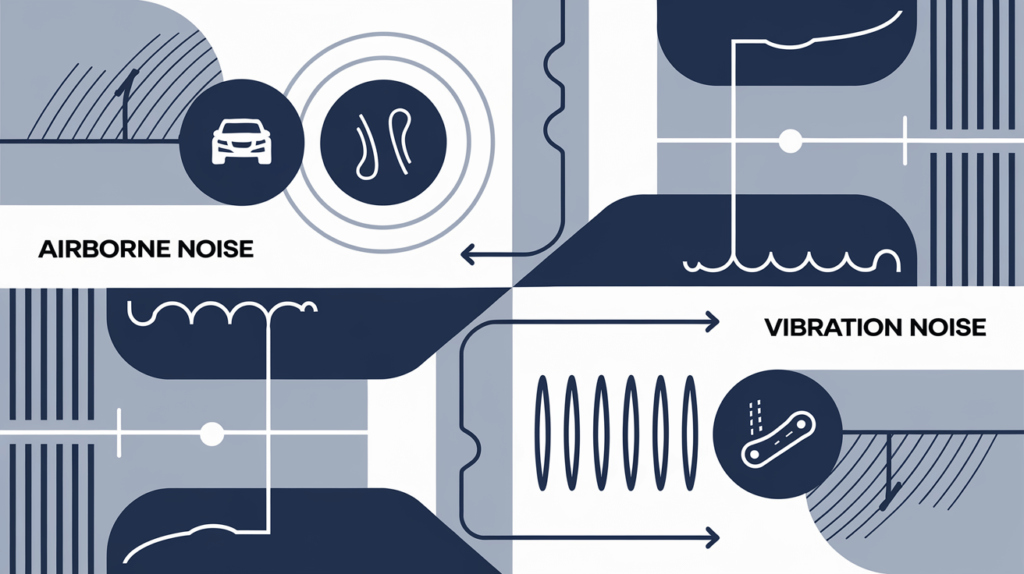
Noise comes in two main types—airborne, like voices or traffic, travels through the air, while impact, like footsteps or a slamming door, vibrates through structures. Identifying which you’re dealing with shapes your soundproofing plan—different noises need different fixes.
Airborne noise might be a neighbor’s TV buzzing through a thin wall—easy to block with mass. Impact noise, like kids running upstairs, needs vibration-damping solutions to stop the thumps from traveling.
Not sure which type you’re facing? Airborne Noise Vs Impact Noise explains the difference and how to handle each one.
Most homes deal with both—traffic outside, footsteps above—so you’ll likely need a mix of strategies. Knowing your enemy is the first step to winning the soundproofing battle.
This isn’t just theory—understanding noise types helps you pick the right tools for the job. A beginner’s mistake is treating all noise the same; don’t fall into that trap.
Core Soundproofing Concepts for Beginners
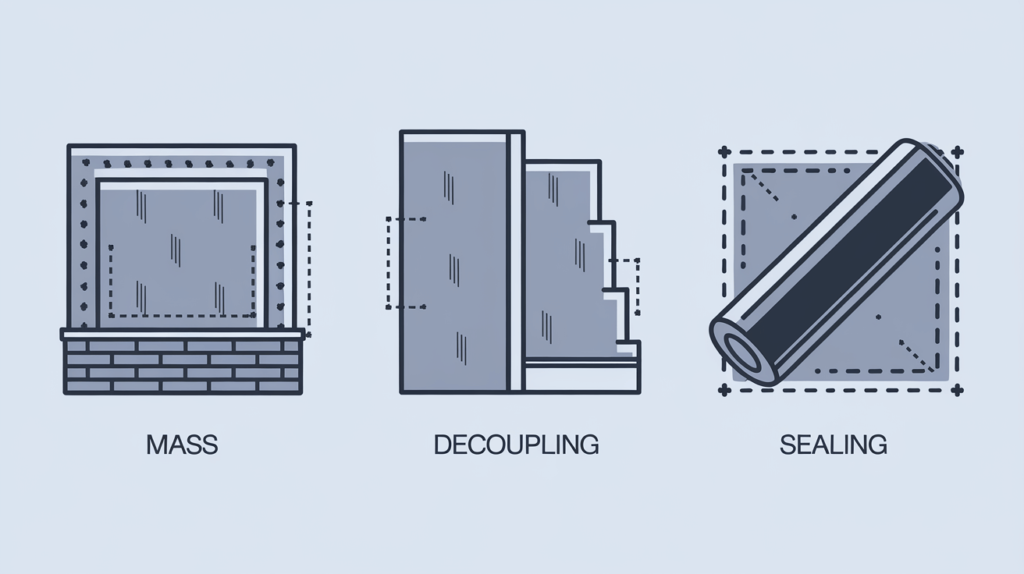
Soundproofing relies on a few big ideas—mass, decoupling, and sealing—all working together to keep noise out or in. Mass means heavy materials like drywall or MLV; decoupling separates structures to stop vibrations; sealing closes gaps where sound sneaks through.
Adding mass—like a second layer of drywall—makes walls harder for sound to penetrate, cutting noise significantly. Decoupling, like using resilient channels, stops vibrations from traveling through your walls or floors—think of it as breaking the noise highway.
Sealing is just as crucial—tiny gaps around doors or windows let sound pour in like water through a crack. A simple fix like weatherstripping can make a surprising difference, even for beginners.
One key decoupling method is worth a closer look—check out What Is Decoupling And How Do You Decouple A Wall? for a deep dive. It’s a pro trick that’s easier than it sounds.
These concepts aren’t rocket science—mass, separation, and sealing are things you can tackle with basic tools. Start small, and you’ll see how each piece fits into the soundproofing puzzle.
Is Soundproofing Worth It? What to Expect

Soundproofing can be a game-changer, but results depend on your setup—good projects cut noise by 10-30 dB, turning a roar into a whisper. It’s not a magic fix—leaks or poor installation can undermine even the best materials, so expect some trial and error.
A well-sealed door might shave off 10 dB, while a pro-grade wall with MLV can hit 30 dB—big wins if done right. But a curtain alone? You’re lucky to get 5 dB—don’t expect miracles from lightweight fixes.
Want proof it works? Does Soundproofing Work? dives into real results, showing what you can achieve with the right approach.
For beginners, the payoff is peace—less noise means better sleep, focus, and comfort, but it takes effort. Set realistic goals: a quieter space is achievable, even if total silence isn’t.
The biggest factor is execution—sloppy work wastes time and money, so start small and build from there. Soundproofing’s worth it if you’re ready to put in the work for results you can hear.
Why Measuring Soundproofing Matters

Measuring soundproofing ensures your efforts aren’t just guesswork—metrics like STC and IIC ratings tell you how well your barriers block noise, with higher numbers meaning better silence. It’s how you confirm your space is truly quiet, not just wishful thinking—a 20 dB drop means you’ve nailed it.
Beyond ratings, you can test yourself with simple tools like a decibel meter—real data beats hoping for the best. It also helps you find weak spots, like a leaky window, before they undo your hard work.
Curious about the metrics? STC and IIC Ratings: How Is Soundproofing Effectiveness Measured explains what those numbers mean for your project.
Want to test it yourself? How To Test Soundproofing In 5 Simple Steps walks you through the process with tools you already have.
Measuring isn’t just for pros—it’s how beginners avoid wasting time on fixes that don’t work. Think of it as your soundproofing report card: pass or fail, you’ll know what to tweak.
DIY or Professional: Choosing Your Soundproofing Path
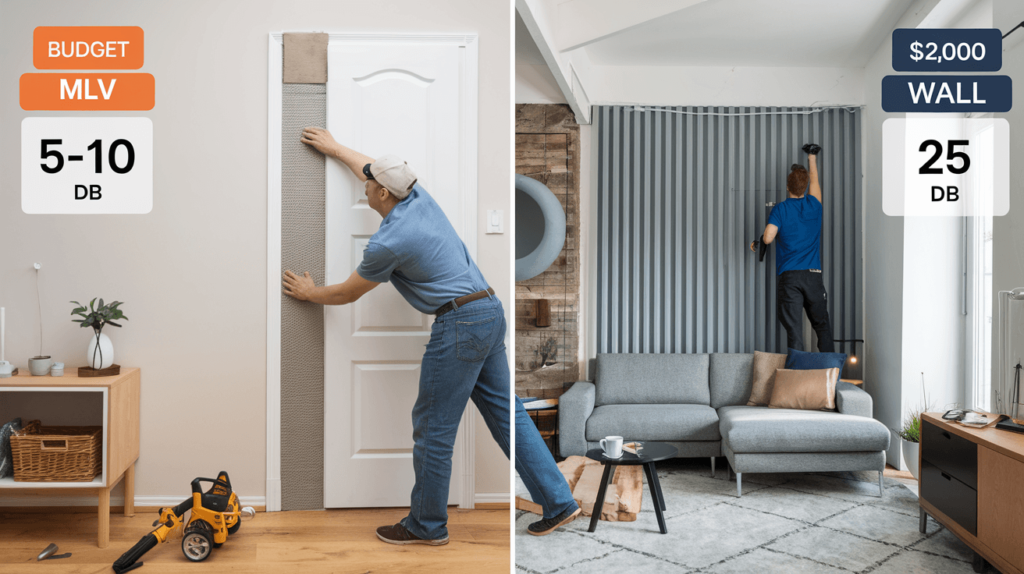
DIY soundproofing saves cash—think $50 for weatherstripping or a bookshelf to dampen noise—but results are modest, often cutting just 5-10 dB if you’re lucky. Professionals bring bigger wins—like 25 dB cuts with MLV walls or decoupled structures—but costs can climb to $500-$2,000 for a room.
Your choice depends on budget, noise level, and DIY confidence—small fixes like sealing gaps are easy, but heavy walls need skill. A pro can save time and headaches, especially for tricky spots like floors or ceilings.
Not sure which path fits? DIY vs Professional Soundproofing compares the pros and cons to help you decide.
Start with what you can handle—DIY for quick wins, pros for serious noise problems. Either way, you’ll learn what works for your space as you go.
Budgeting for Soundproofing: What to Expect
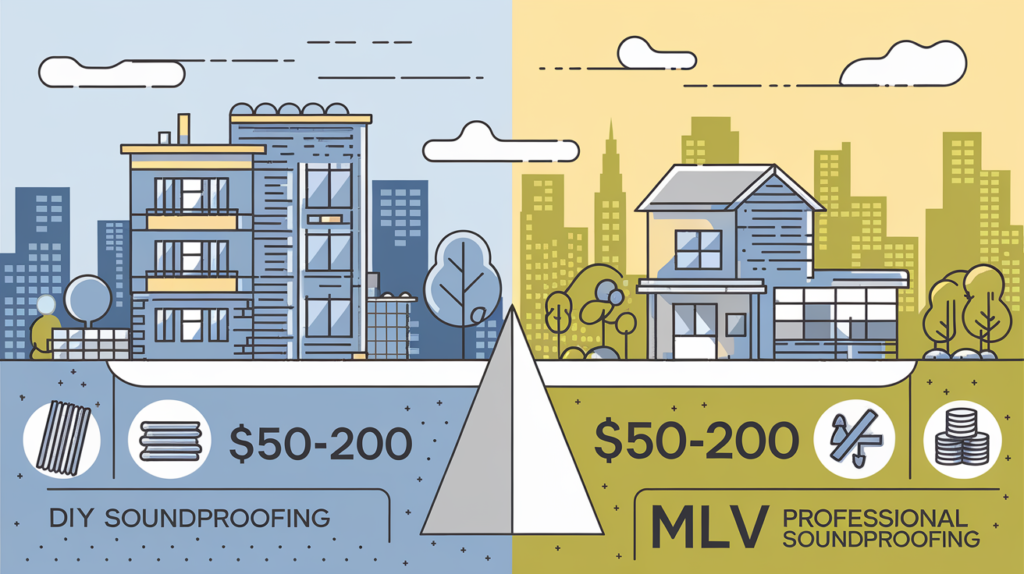
Soundproofing costs vary widely—DIY projects might run $50-$200 for basics like weatherstripping or a few sheets of drywall for a small room. Professional jobs can hit $500-$2,000, depending on materials like MLV, labor rates, and the size of your space.
Noise level plays a role—minor fixes for a quiet suburb are cheap, but a city apartment near traffic demands more investment. Materials add up fast—fiberglass insulation might cost $1 per square foot, while MLV can run $2-$3 per square foot.
For a detailed breakdown, check out How Much Does It Cost To Soundproofing—it covers what you’ll spend in 2025 and beyond.
Beginners should start small—$100 can buy you enough to test the waters, like sealing a door or window. Budget more if you’re tackling a whole room—good soundproofing isn’t cheap, but it’s worth every penny for the quiet.
Conclusion
Soundproofing basics start with understanding noise, methods, and costs—then testing to make sure it all works as promised. This guide gives you the foundation to silence your space, step by step, without the overwhelm.
You’ve got the big picture—now it’s time to dig into the details and take action. Ready to master it all? Dive into for the full roadmap to a quieter life.
Every small fix counts—whether it’s a $5 roll of weatherstripping or a pro-grade wall, you’re building peace one step at a time. Start today, and you’ll hear the difference sooner than you think.
